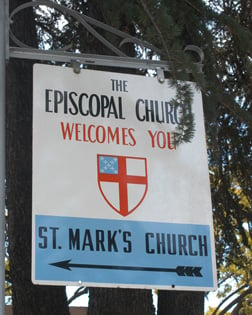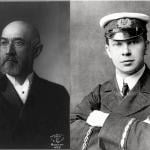Several years ago I started doing triathlons. It was a completely new sport, with lots of challenges, but I was ready to get in shape and this seemed like a good way to do it. I signed up for a sprint triathlon and found a training plan online to get me to the finish line. Since that time I’ve used many trainging plans and mixed and matched them as I’ve come to understand how the different elements are meant to interact in creating more endurance, more speed, greater aerobic capacity, etc. The plans all vary, but they all tend to include some of the same elements—intervals, strength work, endurance work. Whatever the combination, I would never do a triathlon without following a training plan of some kind. No plan is just a recipe for disaster.
The spiritual life is no different. We are unlikely to make much progress in our prayers, our confessions, our charity without training. Christianity is a religion not, to contradict Bill O’Reilly, merely a philosophy. This means that it not only contains beliefs, but practices—we live Christianty, we don’t just think it. The term used for Jesus earliest followers was disciples, which connotes discipline—these are people in training for a deeper humanity as represented and embodied by Christ. He’s a trustworthy coach because he has achieved what we most deeply want, to love, better than anyone else. He can show us the way.
The collection of Catholic Spiritual Practices: New and Old edited by Colleen M. Griffith and Thomas H. Groome is an excellent collection of the kinds of practices and exercises, the workouts if you will, that have developed over the two millennia of Christian life in the world. It is not a training plan for the Christian life, but rather the skeleton from which such a plan can be built. Included are such practices as the “Jesus Prayer,” the Rosary, the Liturgy of the Hours, Fasting, etc. There is also guidance on how to put all of these individual practices together with a rule of life and working with a spiritual director/coach.
Each selection is an excerpt or short essay from a wide variety of writers, not all of them Roman Catholic. In fact the first chapter on the Lord’s Prayer is written by the Anglican N.T. Wright. It is a misnomer really to call this collection Catholic Spiritual Practices. It would have been better to say Christian spiritual practices. While practices like the Rosary are certainly associated with the Roman Catholic Church, many of us, Protestants, Anglicans and Catholics can benefit from such practices if we open ourselves up a bit.
The book is light and easy to read. Not a book to read all at once or in order, but rather a book to explore with an eye to the needs of your own spiritual training plan. It is an excellent resource like no other and a good spark to go deeper with any of the individual practices outlined. It also does an excellent job of showing that spiritual practices do not only happen in the chapel or church, but extend into the world with care of the creation, hospitality and works of mercy.
To be disciples in the world we must start training. It is only through such practices and training that we will move ever closer to the pattern of Christ, our greatest example and teacher. Catholic Spiritual Practices is an excellent resource for this journey.















